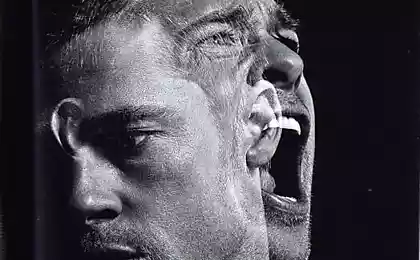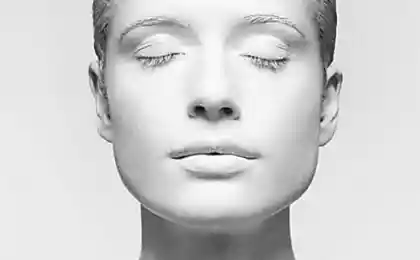1129
Mechanisms of psychological protection
1. Wipe.
It is a process of involuntary removal of unacceptable unconscious thoughts, motives or feelings. Freud described the protective mechanism of motivated forgetting. It plays an essential role in the formation of symptoms. When this mechanism to reduce anxiety is insufficient, connect other protective mechanisms to repressed material to be realized in a distorted form.
2. Regression.
Through this mechanism, it carried unconscious descent of an earlier level of adaptation, which allows to satisfy desires. Regression may be partial, full or symbolic. Most emotional problems are regressive traits in normal regression seen in games, in the response to unpleasant events. In pathological forms of regression it manifests itself in mental illness, especially schizophrenia.
3. The projection.
It is a mechanism for inclusion in another person or an object of thoughts, feelings, motives and desires that on a conscious level at the individual rejects. Fuzzy form projections occur in everyday life. Many of us completely uncritical to their disadvantages and easily notice them only in others. We tend to blame others for their own troubles. The projection is malicious and, because it leads to an erroneous interpretation of reality. This mechanism often works in immature and vulnerable individuals.
4. Introjection.
It is a symbolic internalization (including a) a person or object. The action mechanism of the opposite view. Introjection a very important role in the early development of the individual, because it is based digested parental values and ideals. The mechanism is updated at the time of mourning the loss of a loved one. With introjection eliminate differences between objects of love and self.
5. Rationalization.
It is a defense mechanism to justify the thoughts, feelings and behaviors that are actually unacceptable. Rationalization - the most common psychological defense mechanism, because our behavior is determined by many factors, and when we explain it more acceptable for themselves motives, then rationalize. In any rationalization has at least the minimum amount of truth, but more than self-deception.
6. Intellectualization.
This protective mechanism involves an exaggerated use of intellectual resources in order to address the emotional experiences and feelings. Intellectualization closely linked to the rationalization and replaces the experience of feelings thoughts about them (eg, instead of real love - talk about love).
7. Payment.
It is an unconscious attempt to overcome the real and imagined shortcomings. Compensatory behavior is universal, because the status of the achievement of an important demand of almost all people. Payment can be socially acceptable (the blind becomes a famous musician) and unacceptable (compensation low growth - the desire for power and aggressiveness)
8. Reactive formation.
This protective mechanism is unacceptable substitute for understanding the motivations hypertrophied, opposite tendencies. Protection has two stage character. Please displaced unacceptable desire, and then amplified his antithesis.
9. Denial.
It is a mechanism of rejection of thoughts, feelings, desires, needs and realities that are unacceptable to the conscious level. Behavior such as if there is no problem.
10. Offset.
This is the mechanism the direction of emotions from one object to a more acceptable replacement. For example, the shift from employer aggressive feelings to family members or other objects. The offset is shown at phobic reactions when anxiety from hidden in the unconscious conflict is transferred to an external object.
Read other articles on psychology.

It is a process of involuntary removal of unacceptable unconscious thoughts, motives or feelings. Freud described the protective mechanism of motivated forgetting. It plays an essential role in the formation of symptoms. When this mechanism to reduce anxiety is insufficient, connect other protective mechanisms to repressed material to be realized in a distorted form.
2. Regression.
Through this mechanism, it carried unconscious descent of an earlier level of adaptation, which allows to satisfy desires. Regression may be partial, full or symbolic. Most emotional problems are regressive traits in normal regression seen in games, in the response to unpleasant events. In pathological forms of regression it manifests itself in mental illness, especially schizophrenia.
3. The projection.
It is a mechanism for inclusion in another person or an object of thoughts, feelings, motives and desires that on a conscious level at the individual rejects. Fuzzy form projections occur in everyday life. Many of us completely uncritical to their disadvantages and easily notice them only in others. We tend to blame others for their own troubles. The projection is malicious and, because it leads to an erroneous interpretation of reality. This mechanism often works in immature and vulnerable individuals.
4. Introjection.
It is a symbolic internalization (including a) a person or object. The action mechanism of the opposite view. Introjection a very important role in the early development of the individual, because it is based digested parental values and ideals. The mechanism is updated at the time of mourning the loss of a loved one. With introjection eliminate differences between objects of love and self.
5. Rationalization.
It is a defense mechanism to justify the thoughts, feelings and behaviors that are actually unacceptable. Rationalization - the most common psychological defense mechanism, because our behavior is determined by many factors, and when we explain it more acceptable for themselves motives, then rationalize. In any rationalization has at least the minimum amount of truth, but more than self-deception.
6. Intellectualization.
This protective mechanism involves an exaggerated use of intellectual resources in order to address the emotional experiences and feelings. Intellectualization closely linked to the rationalization and replaces the experience of feelings thoughts about them (eg, instead of real love - talk about love).
7. Payment.
It is an unconscious attempt to overcome the real and imagined shortcomings. Compensatory behavior is universal, because the status of the achievement of an important demand of almost all people. Payment can be socially acceptable (the blind becomes a famous musician) and unacceptable (compensation low growth - the desire for power and aggressiveness)
8. Reactive formation.
This protective mechanism is unacceptable substitute for understanding the motivations hypertrophied, opposite tendencies. Protection has two stage character. Please displaced unacceptable desire, and then amplified his antithesis.
9. Denial.
It is a mechanism of rejection of thoughts, feelings, desires, needs and realities that are unacceptable to the conscious level. Behavior such as if there is no problem.
10. Offset.
This is the mechanism the direction of emotions from one object to a more acceptable replacement. For example, the shift from employer aggressive feelings to family members or other objects. The offset is shown at phobic reactions when anxiety from hidden in the unconscious conflict is transferred to an external object.
Read other articles on psychology.
























